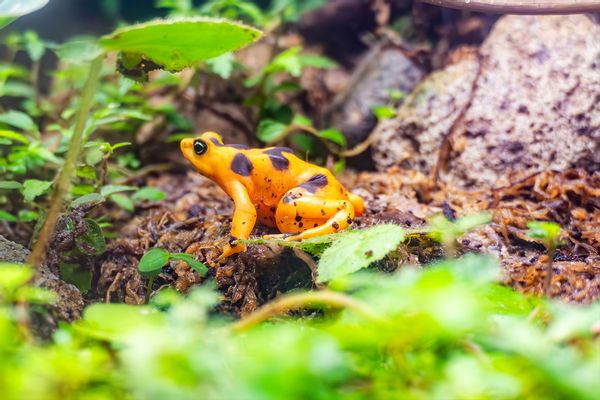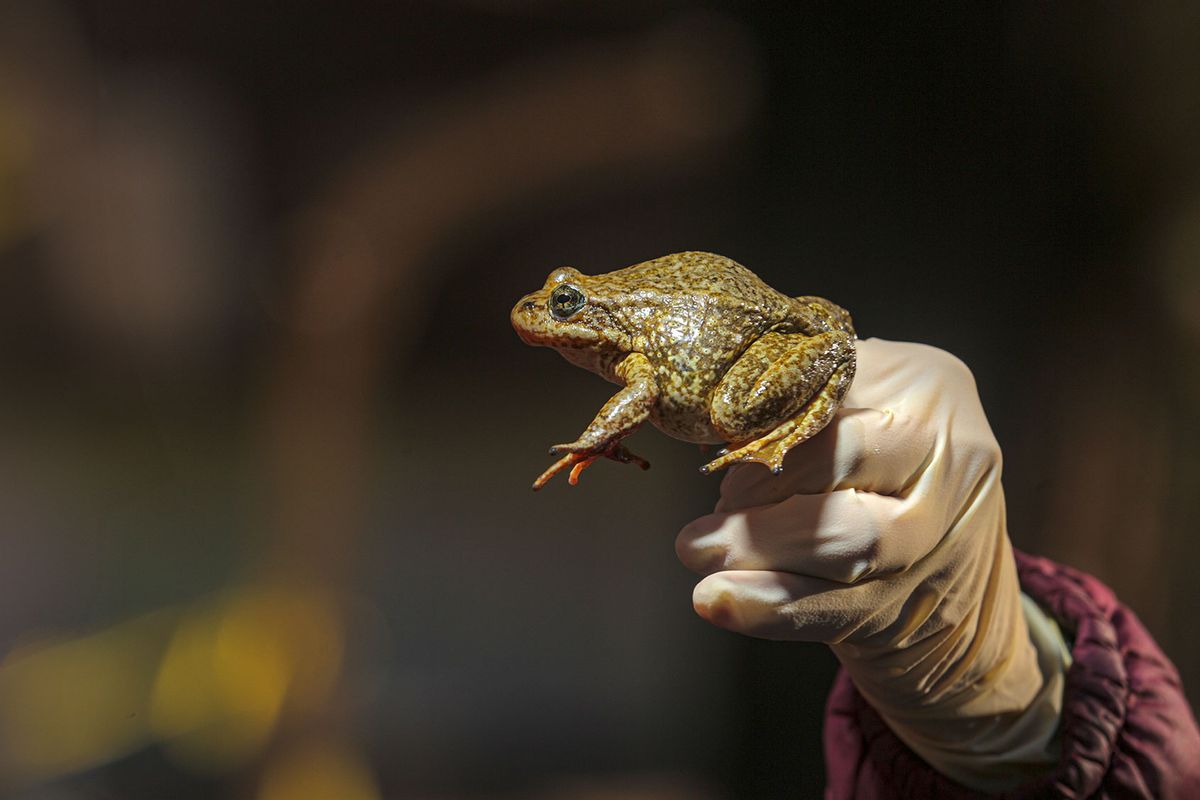Imagine a fungus that makes your skin turn angry red. Some of the skin breaks into ulcers, especially at the tips of your toes, while in other places, pieces of skin shed off entirely. By the time it reaches your heart, which is inevitably fatal, death is probably a welcome relief.
"When tested for its effects on the fungus' ability to attack frogs, it seemed to actually increase the virulence of the fungus against the frog."
That is the fate of the millions of frogs who have suffered from Batrachochytrium dendrobatidis, or BD for short. Over 500 species of amphibians are suffering major population declines due to BD while there have been 90 possible extinctions and near extinctions, threatening endangered species like Panamanian golden frogs (Atelopus zeteki) and yellow-legged mountain frogs (Rana muscosa.) BD is driving one of the great mass extinctions of the current era — and yet now researchers believe that a virus may help herpetologists develop a cure.
Meet BdDV-1, a viral fragment discovered by scientists whose paper was recently published by the journal Current Biology. The researchers found it in much the same way that one disentangles a knot, by pulling on individual threads to see where they lead. While examining the BD fungus to learn about weaknesses, they discovered a single-stranded DNA virus trapped within the genome of the fungus. Although this only applied to certain strains, when infected they produced fewer spores than the uninfected fungi. Now the next step is to see if researchers can clone and engineer this virus so that it kills BD and saves the frogs.
That will not be the easiest task to accomplish, however, for a big reason: Currently the virus makes the fungus more deadly to the frogs, rather than less so.
 Panamanian golden frog (Getty Images/travelview)
Panamanian golden frog (Getty Images/travelview)
"While the virus might have a depressive effect on the growth of the fungus in the lab, when tested for its effects on the fungus' ability to attack frogs, it seemed to actually increase the virulence of the fungus against the frog," Timothy Y. James, corresponding author and professor at the University of Michigan's Department of Ecology and Evolutionary Biology.
In fact, the virus even surprised researchers by not impacting the health of the host frogs and fungi in normal ways.
"Interestingly, by looking at many genomes, we found the surprising pattern that BdDV-1 was only really present in the enzootic strains [strains constantly present in an animal population] and not found in the strains isolated from outbreaks, the so called global panzootic lineage (GPL) strains," James said. "So, we expected the virus might have a negative effect on Bd virulence and were stunned to find the opposite effect."
Want more health and science stories in your inbox? Subscribe to Salon's weekly newsletter Lab Notes.
"If that ultimately led to a Trojan horse type of strategy to kill the fungus great, but our research is touching on the basic biology that shows that indeed the fungus can be infected by a virus."
While it may seem discouraging that the BdDV-1 fragment does not made the fungus less virulent or deadly, in fact scientists are embracing the news. Researchers had previously struggled even to find a virus that could infect the BD fungus, much less one that could be kept alive in a laboratory and potentially bioengineered. The BdDV-1 checks all of those boxes.
"Before this research we had been trying for years to determine if there was a virus that could infect this fungus," James said. "Finally discovering that there was one, and that it was a DNA virus rather than an RNA virus settled the score and also opened up a broad field of research to our team, as DNA viruses are understudied in fungi."
The next step, of course, is modifying the BdDV-1 fragment so that it has the effect on the fungus that humans wants: Helping frogs.
"We need to be able to move the virus in and out of Bd strains through a genetic modification process called transformation," James said. "This will allow us to modify the sequence of the virus to test its function."
We need your help to stay independent
The research also transforms our understanding of fungus biology, a field known as mycology. Prior to this study, experts did not even know if viruses that can infect fungi (mycoviruses) could do so unless they were RNA viruses. This is the first full-length CRESS virus of Circoviridae (a specific family of viruses) that is known to infect fungi. It is a mystery to the scientists — including its mechanisms of action.
“We don’t know how the virus infects the fungus, how it gets into the cells,” UCR microbiology doctoral student and paper co-author Mark Yacoub said in a press statement. “If we’re going to engineer the virus to help amphibians, we need answers to questions like these.”
Yet even though it is "not clear" how their new knowledge will help them save frogs, James said, the experts at least know "that the fungus can be infected by a DNA virus [so] we can start considering using that viral backbone as a way of delivering a gene of interest into the fungus. If that ultimately led to a Trojan horse type of strategy to kill the fungus great, but our research is touching on the basic biology that shows that indeed the fungus can be infected by a virus."
James added, "The rest comes far down the road."



Shares